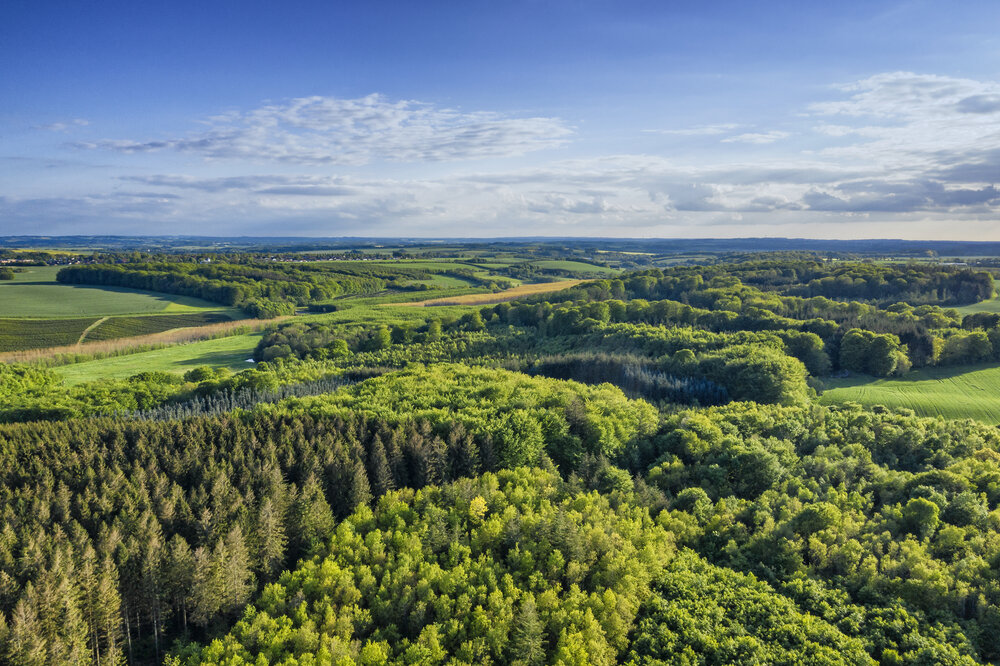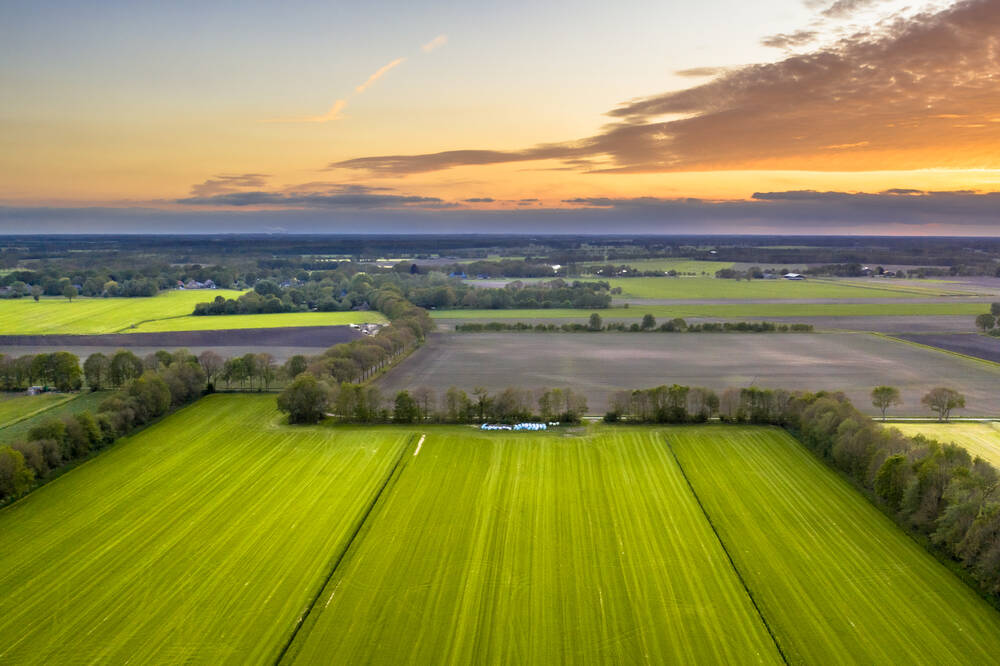Key Takeaways:
- Carbon Credit Prices Are Rising – Recent carbon credit sales of £125/tonne have set new benchmarks, with averages before just £5-30 per tonne.
- Despite currently lacking tightknit regulations, stacking allows landowners to make multiple income streams from a single piece of land.
- Some credit types like BNG and nutrient credits are governmentally recognised, and others such as BNG units and carbon credits are not yet.
- Having credits on your land actively generating income can significantly raise land value, but value risks dropping if all credits sell early.
- All environmental credits come with long-term commitments from just a couple of decades to some being in perpetuity.
With policies like Biodiversity Net Gain nationally mandated in 2024, nature markets have gained significant traction as a way to incentivise biodiversity restoration for land managers in England.
Our latest article covers how each credit can be stacked, plus which are formally recognised by Defra and which lack the needed regulation.
From nutrient credits to ELM, we cover how each nature market and its ecosystem service leaves for bunding, layering, and stacking.
Understand how natural capital markets are developing, what landowners should consider now, and how future regulation might shape credit eligibility, investment opportunities, and ecological co-benefits across England.
What Is Natural Capital Stacking?
Natural capital stacking is a way to generate multiple streams of income from one land, having multiple ecosystem services such as BNG units and nutrient credits.
While regulations are underdeveloped, it’s showing promising signs of incentivising ecological restoration on a major scale.
It requires the key concepts of additionality (environmental benefits wouldn’t have happened anyway) and separability (environmental benefits have separate outcomes ecologically).
Key Types of Stacking

Stacking
Stacking is selling one or more types of environmental credits on a piece of land, such as BNG units and nutrient credits.
Defra outlines that BNG and nutrient schemes are explicitly permitted, baked into Defra’s formal rules.
This is a key option for climate-conscious landowners exploring income maximisation, and people whose land may be tied into long-term legal agreements for nature restoration anyway.
To do two at once, the landowner must prove each credit has a different outcome. If BNG units are involved, stacking with carbon credits is not currently Defra-recognised.
Bundling
Bundling differs vastly, whereby a single credit provides multiple ecosystem services at once. The buyer then purchases a package instead of a single credit with various co-benefits.
Bundling is not legally recognised in UK-regulated markets, with all schemes from BNG and nutrients to carbon requiring separate registries and baselines.
It’s predominantly rooted in academic theory, not truly operating in credit markets.
Layering
Layering is when one piece of land is separated into various ecosystem services.
The land separates functionally or vertically into layers: think trees for carbon credits, understory wildflowers for biodiversity.
Layering is much more recognised than bundling, but less than stacking. No explicit legal structure exists; having to address separate registries and prove separance of outcome if wanting to pursue the process.
Examples of Ecosystem Services That Can Be Stacked
Carbon Sequestration
Carbon sequestration involves peatland rewetting, improving soils, or planting trees to store CO₂ in peat, soil or trees.
This produces carbon credits that are sold through the UK Woodland or Peatland Code. The stacking of these credits with BNG or nutrient credits is Defra-recognised (when ecological outcomes are clearly separate).
Carbon credits are likely to be stacked by estates, rewilding organisations, NGOs, or in agroforestry (trees x crops x livestock), and bought by corporates neutralising emissions.
Biodiversity Net Gain
Please note that when discussing BNG’s assets here, we are covering BNG units. BNG credits are a separate, non-relevant asset class that pertains only to governmental, statutory credits that are a final resort for developers when all other options (BNG units) have been exhausted.
Biodiversity Net Gain was rolled out by the UK government in February 2024, outlining that developers must now make up for habitats lost in development to a net gain of 10%.
Gains must first be attempted on-site; however more commonly off-site BNG units must be purchased to meet the mandated target.
At Gaia we’ve built the UK’s largest BNG platform by far, with over 40,000 BNG units surpassing £1 billion in value from over 150 of our verified sellers. Browse our free-to-use platform here.
A BNG unit averages at around £30,000 and equates to 2 – 8 hectares of land, depending on ecological baselines of the site.
Land must be maintained and habitats uplifted for a minimum of 30 years, bringing and restoring ecosystem services like pollinator corridors, climate regulation, water filtration and flourishing biodiversity.
Nutrient and Water Quality Credits
Nutrient and water quality credits combat nitrate and phosphate pollution from new developments caused by runoff and sewage.
In England, this is a governmentally-recognised requirement in ‘nutrient neutrality zones’ where nutrient pollution is at its worst, causing eutrophication (algal blooms), aquatic ecosystem collapses, contaminated drinking water and more.
Nutrient neutrality zones accounted for over 14% of England’s land in 2023.
Works taking place include wetland creation, cover crops, and riparian buffers, with one nutrient credit able to be sold when one kg of nutrient has been offset per year, ranging from £2,000 – £5,000 on average.
Credits are typically sold by estates, farmers, and councils, and purchased by infrastructure firms or developers operating within the zones.
Habitat Banking
While BNG unit providers can range from national organisations like the RPSB to small-scale farmers selling a handful of units, one specific approach within BNG is habitat banking.
Not formally recognised, it’s a new BNG terminology signalling a larger-scale, more strategic ‘bank’ of land with more robust ecological functions and scalability.
There are no set requirements for a habitat bank; it’s a business model within the BNG market that can lead to great biodiversity in time under the policy.
The largest single bank of habitats in the UK is Environment Bank’s Bog Hall in North Yorkshire. Explore their BNG listings on Gaia in North Yorkshire here: Filey, Whitby, Ripon and Harrogate.
Agricultural and Timber Production
Livestock, crops or timber production are provisioning ecosystem services in the sense that they are the service nature provides.
Works might include cultivation, grazing, or harvesting, undertaken by farmers, landowners, or foresters.
While they aren’t sold as a form of credit, their land can be stacked to deliver BNG units, nutrient credits, or soil carbon credits on top of the ongoing productions.
It creates a dual income stream, and can be a key part of natural capital strategy.
Opportunities for Landowners and Investors

Diversifying Income Streams
A huge bonus of stacking is having multiple streams of income coming in from a single piece of land.
With BNG, the land is legally locked-in for 30 years minimum anyway, so it’s worth seeing if the ecological conditions and land available can unlock any further environmental and lucrative benefits.
Enhancing Land Value
If you’re able to stack, your land value can really spike.
When your land has multiple income-generating, nature-restoring and biodiverse projects, you attract many strategic buyers from environmental investors to conservation trusts.
Moreover, these approaches can bring in eco-tourism in the long term, or attract educational institutions wanting to study restored land.
Contributing to Net Zero and Nature Recovery Goals
Businesses with spare land should consider stacking as a way to meet net zero targets; directly offsetting any emissions with on-site restoration schemes.
Beyond sparkling in the eyes of forward-thinking stakeholders, attracting long-term consumers, and exceeding annual targets, turning spare land into natural assets directly protects the planet and challenges global warming.
Risks and Challenges
Double Counting and Market Integrity
In natural asset markets, there is a risk of double-counting.
This is especially prevalent with carbon credits. Buyers must ‘retire’ their credits on public registries to ensure they cannot be purchased again, and that the natural benefit isn’t reclaimed.
BNG uses either a Section 106 or a Conservation Covenant legal agreement, leaving little room for double-counting; however BNG uplifts could be skewed to claim another credit in very rare cases.
In the same vein, nutrients link with set credits, making double-counting low risk but not unheard of.
Legal and Regulatory Barriers
While a few stacking types are recognised in legal frameworks like BNG + nutrients or BNG + ELM (Environmental Land Management), others remain muddied.
BNG + carbon, for instance, is not Defra-backed in formal policy but is allowed in practice if outcomes are proven different. Unfortunately, in the cases that this has been possible, it invalidates the BNG units for sale.
So instead of selling BNG units and carbon credits simultaneously, it’s more so that you’re selling carbon credits at a higher margin due to their biodiversity co-benefits.
Monitoring and Verification Complexity
The environmental credits market is in its early stages, with BNG the only nationally mandated scheme to date.
BNG itself is nuanced and complex, and adding a layer of stacking carbon credits at this stage could be very messy in practice.
The monitoring and verification systems require specialised expertise and technology that is not yet standardised.
UK Policy and Market Context

Environmental Land Management Schemes
Environmental Land Management Schemes (ELMs) replaced the EU’s Basic Payment Scheme, with a gradual transition period ending in 2027.
Under BPS, farmers get paid for the amount of agricultural land they have, regardless of use (meaning that just looking like farmland could have been enough).
Biodiversity Net Gain Requirements
ELM requires action tied to environmental benefits, and this can be stacked with BNG units. ELM pays hundreds per hectare a year, and BNG generates thousands per hectare in one-off payments.
Biodiversity Net Gain is a UK policy requiring a 10% gain of habitats when they are lost in development, creating a growing market of offsite BNG units, highlighted by Gaia’s BNG Marketplace, the largest BNG platform by far.
Voluntary Carbon Markets and Peatland Codes
Voluntary carbon markets allow businesses, organisations, or individuals to buy (and sell, when in excess) carbon credits to offset their emissions.
This is often through schemes like the UK Woodland Carbon Code or Peatland Code. These certify tree planting or peatland restoration, absorbing CO₂ over time. Credits are ISO-validated and IUCN-supported.
Best Practices and Recommendations
Contract Clarity and Legal Advice
If considering stacking, contact clarity here means ensuring legal agreements are crystal clear, don’t conflict, and transparent for all stakeholders involved.
To achieve this there should be no vague or opaque terminology (lacking the specific details), no assumptions should be made, and no overlaps such as ecological outcomes.
Aligning with Verified Standards
For any efforts in natural capital, set methodologies and standards must be followed.
This might involve the UK Woodland Carbon Code for carbon credits, the Defra BNG Metric 4.0 for BNG, or the Natural England Nutrient Neutrality tool.
Without doing so, projects will likely face legal barriers and rejections.
Long-Term Land Stewardship
Environmental credits come with a long-term commitment and responsibility.
This might be 20 years minimum for nutrient credits, and as long as forever sometimes with a Conservation Covenant (with Biodiversity Net Gain).
The Future of Natural Capital Stacking
Natural capital stacking offers the financial incentives needed for landowners to commit to combating climate change and enhancing England’s biodiversity long-term.
It’s far from where it needs to be, but each scheme has potential for the future:
- ELMs are in pilot stages, needing regulatory change and more private funding to scale up
- BNG is currently under consultation to tighten holes, make adjustments, and streamline the process for all involved
- Carbon credits are on the rise, with a recent sale at £125 per credit smashing previous averages of £5/credit.
While stacking itself is limited in regulation, developing policies shine a promising light on the ability for multiple ecosystem service monetisation.
Frequently Asked Questions
What is natural capital stacking in simple terms?
Natural capital stacking is using one piece of land for multiple ecological uplifts. Each creates natural capital assets which can be sold, to both support biodiversity and amass multiple income streams.
What’s the difference between a credit and a unit?
A credit is a tradeable certifiable equivalent to one environmental benefit, such as a tonne of 1 CO₂ removed per carbon credit. On the flip side, a unit is a scheme-specific tool of measurement like a BNG unit.
Does the land still have value once all the credits are sold?
Income from environmental credits can be front-loaded, with land use left restricted. While land with credits generating ongoing income can be of higher value, land that has sold all its credits can still offer value through stacking or potential eco-tourism.
More Information
https://www.gov.uk/government/collections/biodiversity-net-gain

